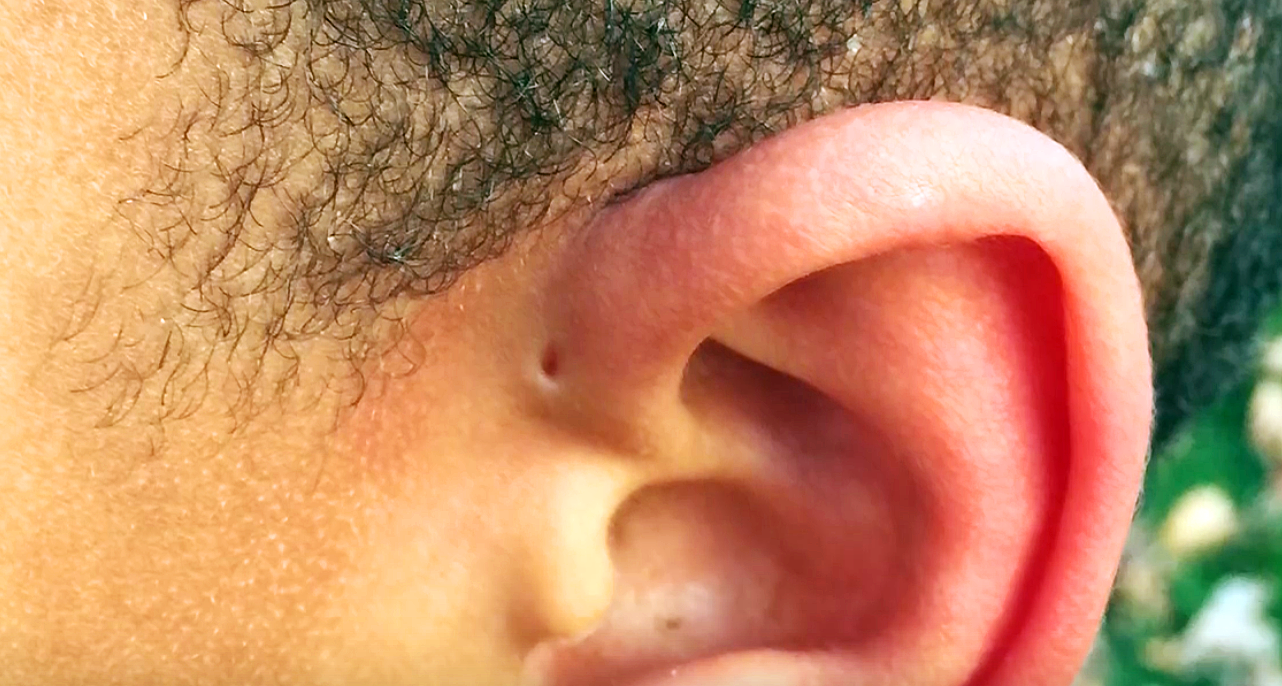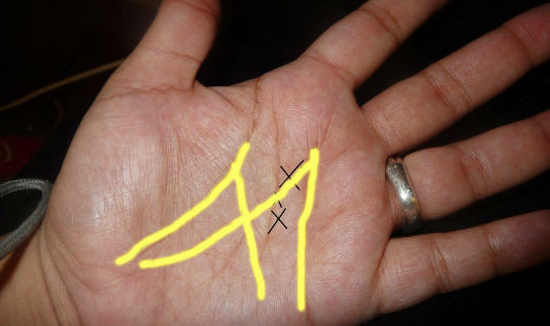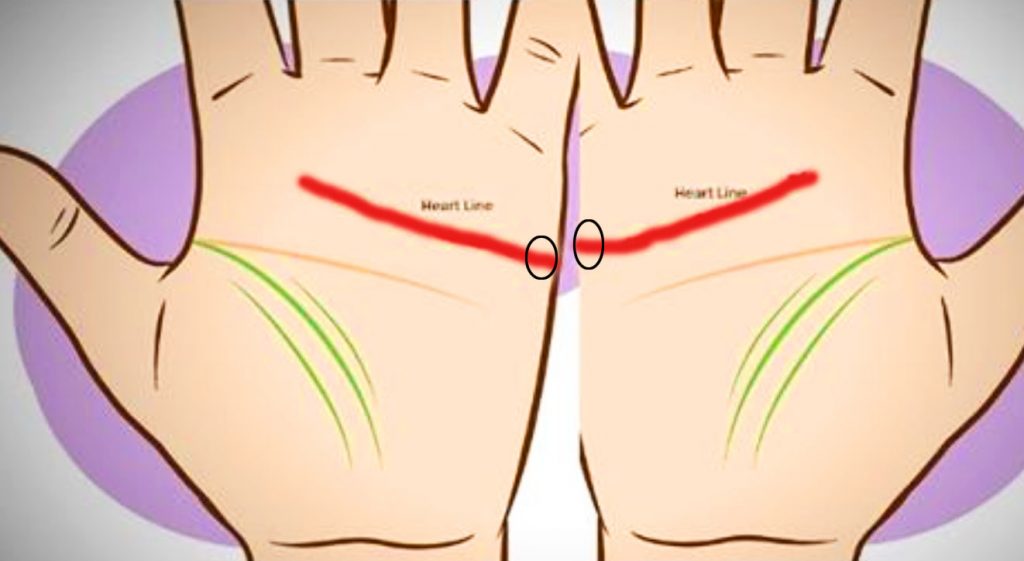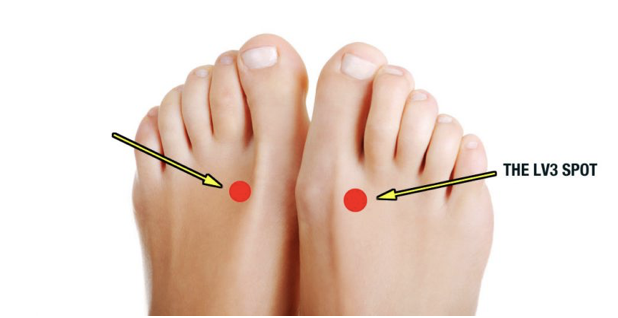This Is The Strange Reason Your Tendon Protrudes Out Of Your Wrist Like That.
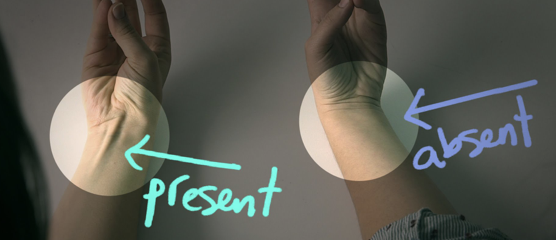
image via – youtube.com
Over the past 200,000 years or so modern humans have been developing and many tiny changes have led to our current form. All of us who are alive today are a product of adaptation, evolution, and natural selection. Even though our ancestors may have looked similar in appearance to us, many physical and anatomical things are different these days. Proof of this can be found in the vestigial structures scattered throughout our bodies.
Vestigial structures are are left over parts of the evolutionary creature that used to be useful to the organism but as time progressed through the years these parts have lost almost all of their original function due to changes in evolution. Essentially, mother nature renders certain things absolute or no longer necessary for the survival of a species going forward.
Instead of eliminating it all together, it’s slowly faded out and rendered useless, but still remains intact. Why certain body parts and functions stay, while others get completely eliminated, is largely a mystery of nature. Most of them do not harm us in any way and the ones that do, such as wisdom teeth or an appendix, can be easily dealt with and safely removed.
The best known examples of vestigial structures include the appendix, goosebumps, wisdom teeth, tonsils, male nipples, and the outer ear. These body parts and traits used to serve important, necessary functions to our ancestor’s survival but today they are no longer needed. The accompanying video goes over all of the aforementioned things and more in clear detail so be sure to check it out and learn more about why goosebumps could have come in handy a few hundred thousand years ago.
A neat way to see how you may have evolved is to lay your arm on a flat surface so that the underside and the palm of your hand face up. Touch and press together your pinky finger and thumb and then raise your hand up at the wrist just a little bit, as shown in the video.
If there is a raised band in the middle of your wrist, you have a vestigial muscle in your forearm called the palmris longus. The ridge you see is a tendon that connects to it and that muscle is either absent from both arms, or missing from one arm, in an estimated 10-15% of the population. If you’re missing this muscle there’s no need to worry because it’s essentially useless! Studies have shown that it has absolutely no effect at all on a person’s grip or pinch strength.
Check out the video for more neat and interesting facts on how us humans have evolved over time and pass this article and information on so that more people can be informed!
Did you know about this tendon?
Please Share This With Your Family and Friends
Have You Ever Spotted THIS Small Hole Above Someone’s Ear? THIS Is The Strange Reason Why It’s There!
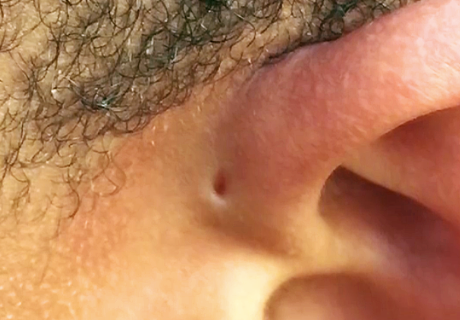
image via – facebook.com
If you have ever noticed that somebody has a tiny hole above their ear, that looks like it could be a misplaced dimple, you may have just thought that it was from some weird type of piercing. However, what you actually spotted is a body feature that is a naturally occurring mutation in some humans. And while the little hole is not all that common in The United States, it is more prevalent than you’d imagine it to be!
Those tiny holes are best known as preauricular sinuses and they are located right around the junction where the top of the external ear cartilage meets the face. They are considered a birth defect and get passed down from one generation to the next and so on..
The tiny holes can show up on 1 or both ears, with the right ear being the more common site. Usually they are harmless, but just like any other types of sinuses, they can sometimes become infected and require treatment and antibiotics. Some may also form cysts and in rare cases draining or removal is the best option.
Why the holes are there in the first place and for what purpose remains mostly quite the mystery. The video mentions an interesting theory put forth by Neil Shubin, an evolutionary biologist, who thinks that these holes could very well be an ‘evolutionary remnant of fish gills left over’. It’s an interesting theory and makes complete sense, but there could just as easily be another explanation for the strange holes!
The chances of a person being born with a preauricular sinus dimple varies across geographical and ethnic lines. Researchers in Korea found that the small dents are most common among Asian and African populations, where between 4-10% of the population may have them.
In comparison, less than 1% of Americans and people born in the U.K. are affected, which is way less. In Ethiopia, these small holes are considered lucky to have because they’re believed to bring people abundance, riches, money and wealth!
If you didn’t know what those strange ear holes were before, now you know the basics about the auricular sinus. Please pass this article on and help pass it along so that more people can learn about them and be informed!
Please SHARE This With Your Family and Friends
Have You Ever Noticed This Tiny Hole Above Someone’s Ear? This Is The Strange Reason Why It’s There.
If you have ever noticed that someone has a tiny hole above their ear, that looks like it could be a misplaced dimple, you may have assumed that it was from some odd type of piercing. However, what you actually picked up on is a body feature that happens to be a naturally occurring mutation in some people. And while the little hole is not all that common in America, it’s more prevalent than you’d imagine it to be.
Those tiny holes are best known as preauricular sinuses and they are located right around the junction where the top of the external ear cartilage meets the face. They are considered birth defects and get passed down from one generation to the next. The holes can occur on one or both ears, with the right side being where they are more frequently found. For the most part they are harmless, but just like other types of sinuses, they can become infected and require treatment. Some may also form cysts and in rare cases draining or removal is the best option.
Why the holes are there in the first place and for what purpose remains mostly a mystery. The accompanying Business Insider video mentions an interesting theory put forth by Neil Shubin, an evolutionary biologist, who says that they could very well be an ‘evolutionary remnant of fish gills’. It’s an interesting idea and makes sense, but there could just as easily be another explanation for the holes.
The chances of a person being born with a preauricular sinus dimple varies across geographical and ethnic lines. Researchers in Korea found that the small dents are most common among Asian and African populations, where between 4-10% of people may have them. In comparison, less than 1% of Americans and those born in the UK are affected, which is far fewer. In Ethiopia, the teeny holes are considered lucky to have because they’re believed to bring people money and wealth.
If you didn’t know what those strange ear holes were before, now you know the basics about the auricular sinus. Please pass this on and help share it so that more people can learn about them and be informed!
Please SHARE This With Family and Friends

